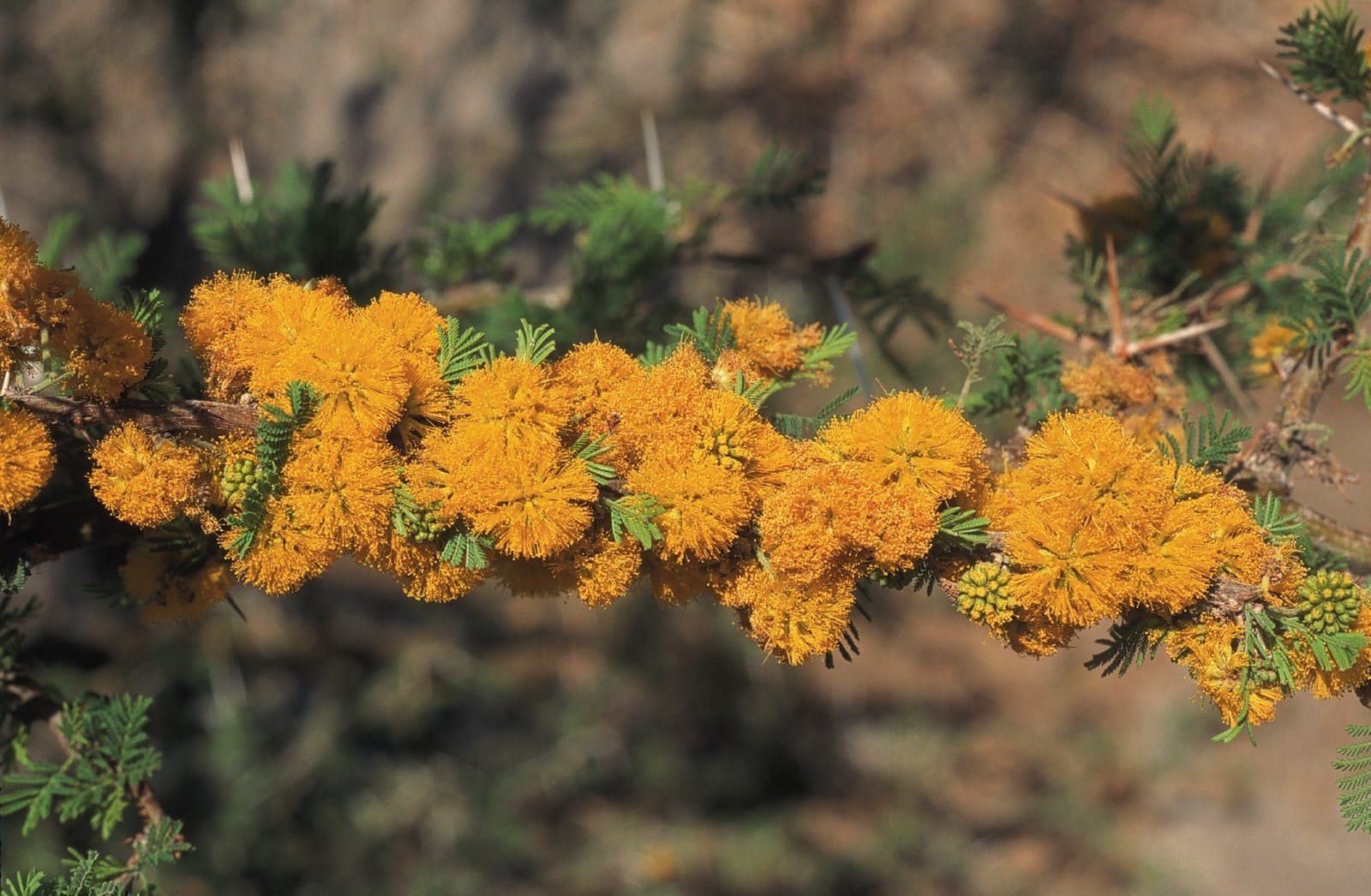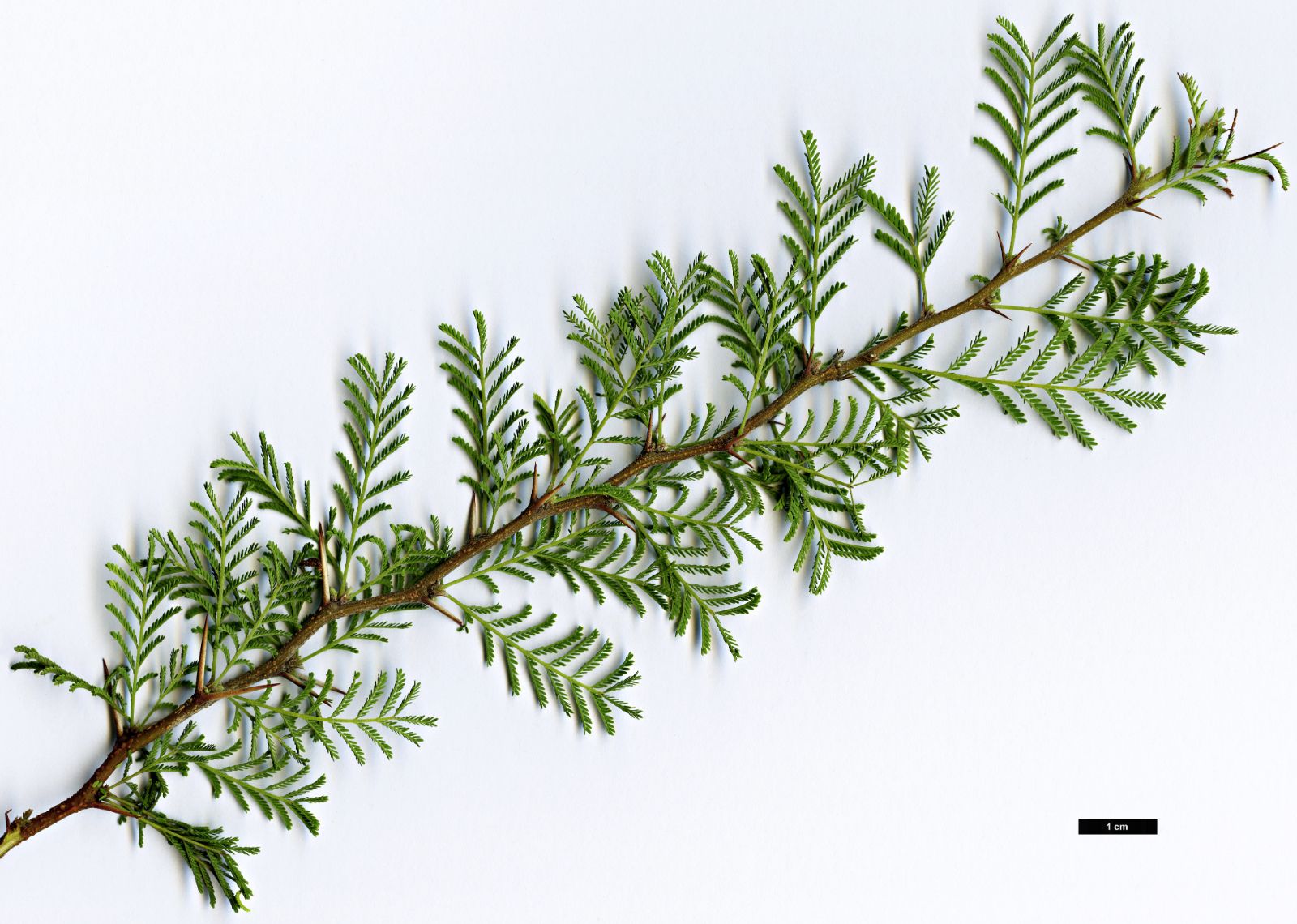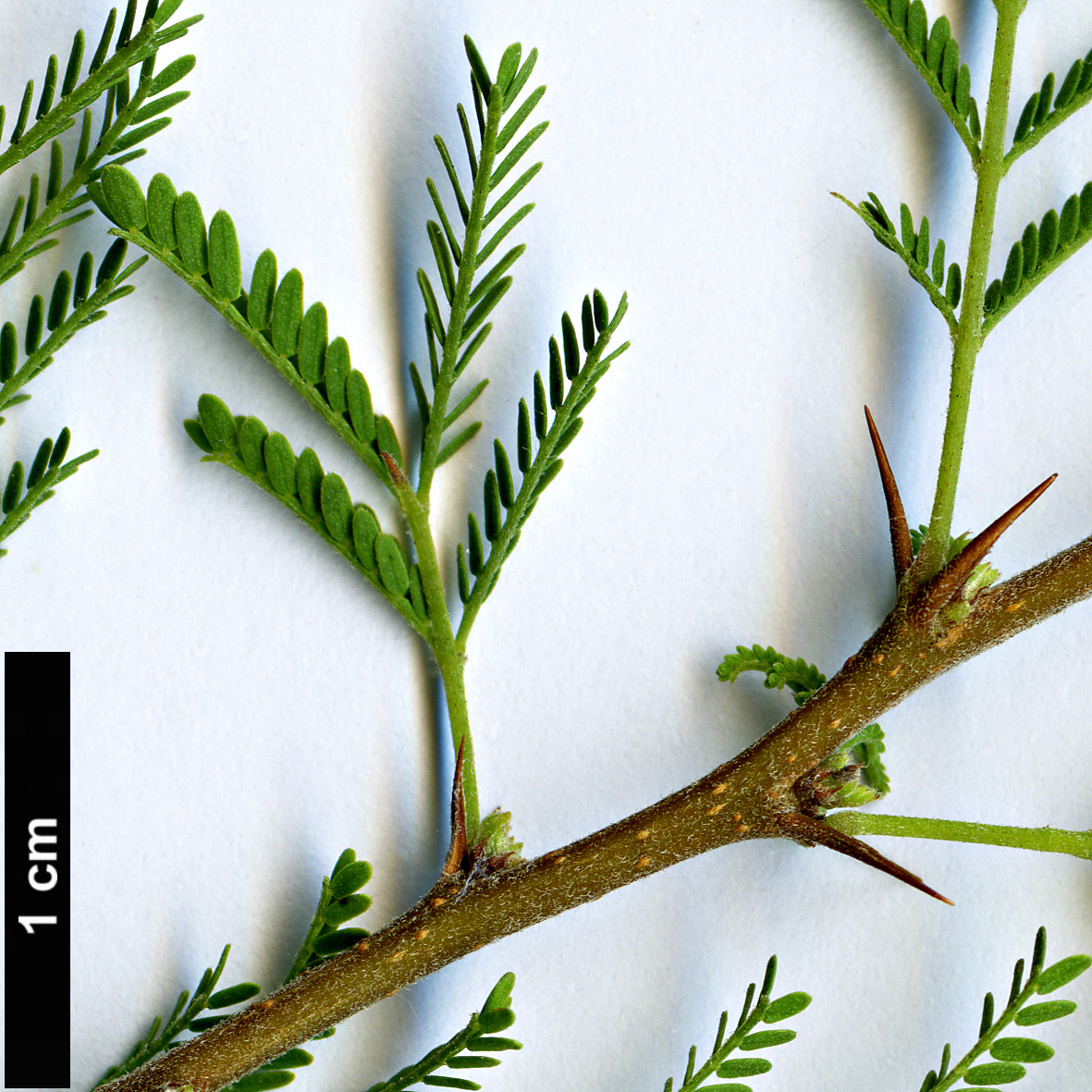Acacia caven
Credits
Article from New Trees by John Grimshaw & Ross Bayton
Recommended citation
'Acacia caven' from the website Trees and Shrubs Online (treesandshrubsonline.
Tree or shrub to 5 m, densely branched. Branchlets with white stipular spines, 1–3 cm long. Leaves bipinnate, often in fascicles, bright green; pinnae 3–8(–10) pairs; pinnules 12–30 pairs, linear, 0.1–0.4 × 0.1 cm; rachis with distinct gland at point of attachment of first pinnae. Inflorescence simple, axillary, with two to three heads per node; heads globular, 1–2 cm diameter, bright yellow, fragrant. Flowers densely packed, 5-merous, petals larger than sepals, stamens numerous. Legume cylindrical, 3–7 × 1.2–2.5 cm, leathery, dark brown or black. Flowering in spring, before the foliage emerges. Cialdella 1984, 1997. Distribution ARGENTINA; BOLIVIA; CHILE; PARAGUAY. Habitat Tolerant of a variety of habitats, though often found in coastal areas. Resistant to desertification; often invasive and difficult to eradicate (in humid areas). USDA Hardiness Zone 8–9. Conservation status Not evaluated. Illustration NT65, NT908.
Acacia caven is a fast-growing small tree which soon takes on a characterful appearance, its somewhat contorted trunks supporting a rounded canopy of thorny branches. The thorns are whitish and very sharp. The pinnate leaves are semi-deciduous to a degree that is probably dependent on water availability, but are fewest by early spring when the tree comes into flower. The deep-yellow flowers are produced in great abundance and are very fragrant, scenting the air around the tree. Although recommended for desert or semi-arid conditions in southern parts of the United States (Arid Zone Trees 2000–2008), A. caven is adaptable and grows successfully at Kew. The tree there is from a collection made by Watson & Pern (WAPE 6325) in low Andean foothills near Chillán, Bío-Bío, Chile, in 1988. Trees from the same collection also grow at the University of California Botanical Garden at Berkeley.





